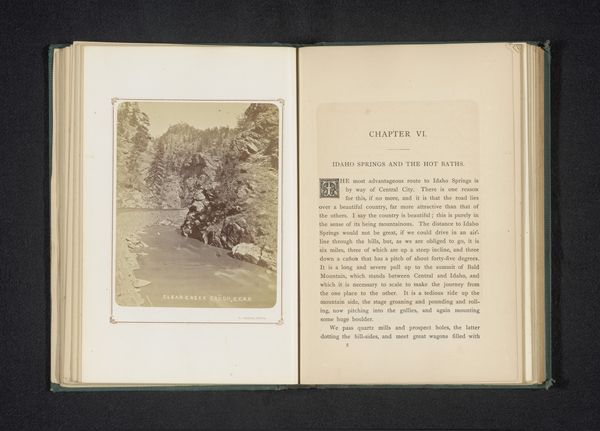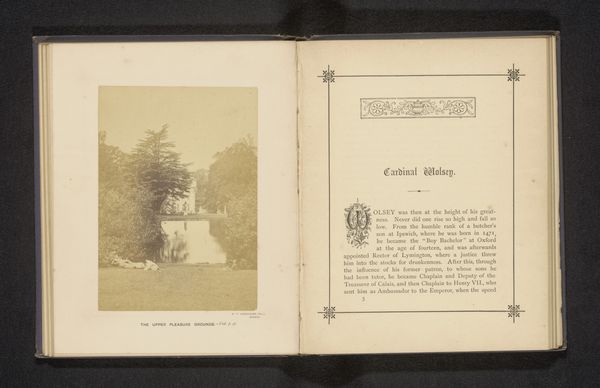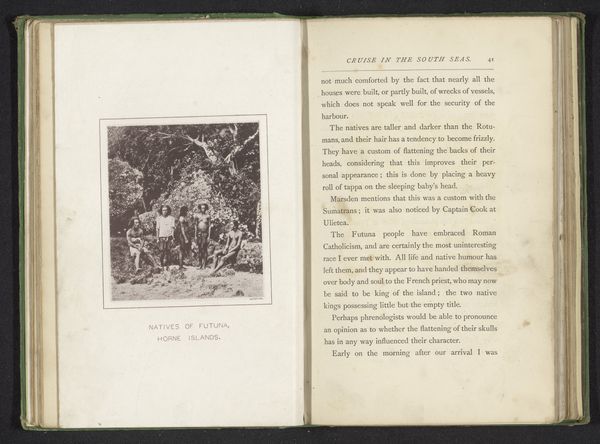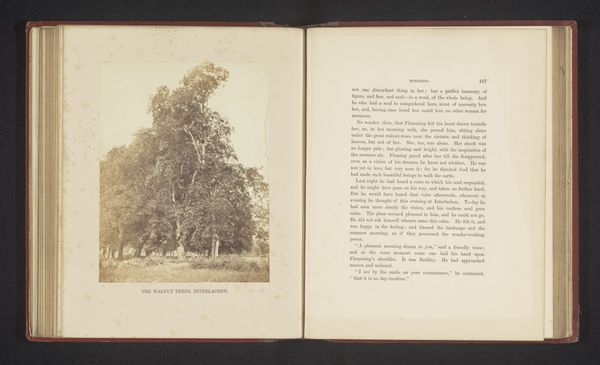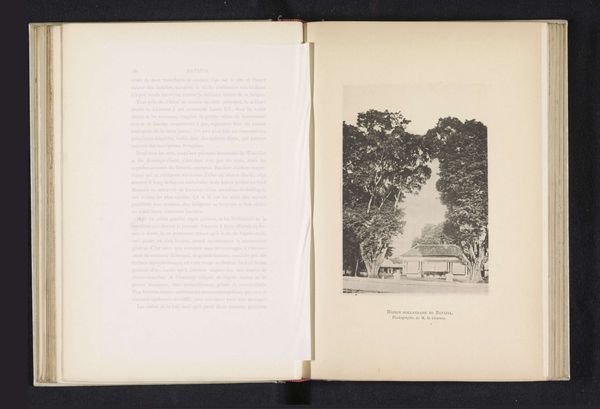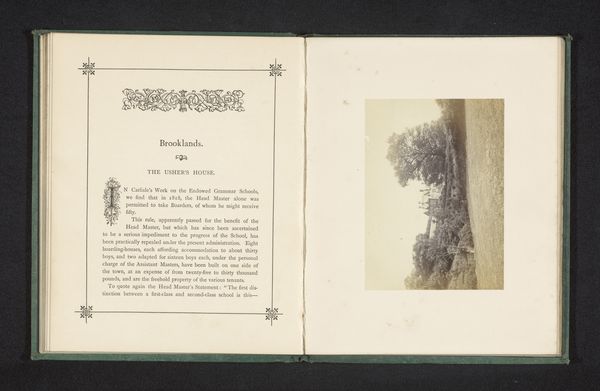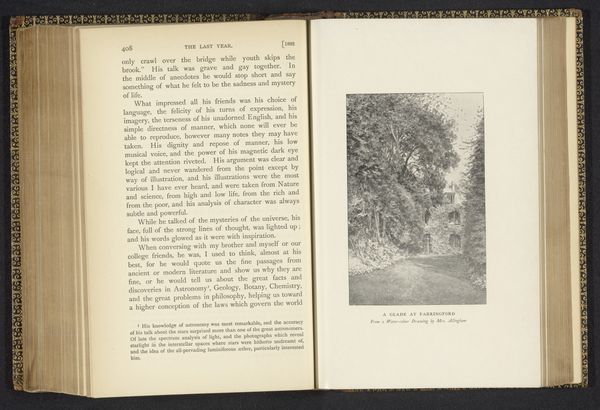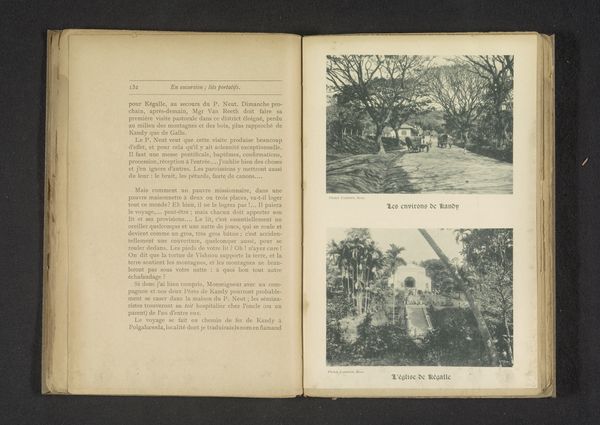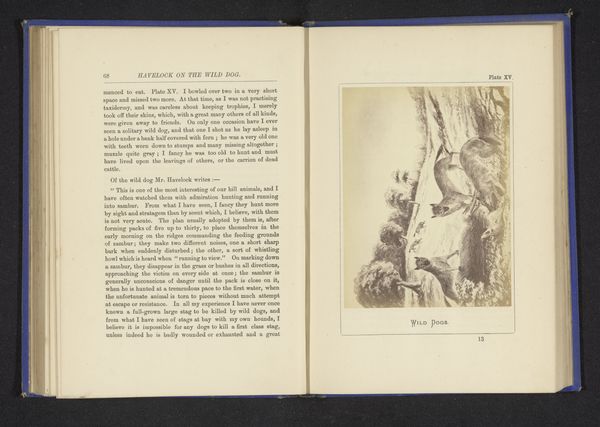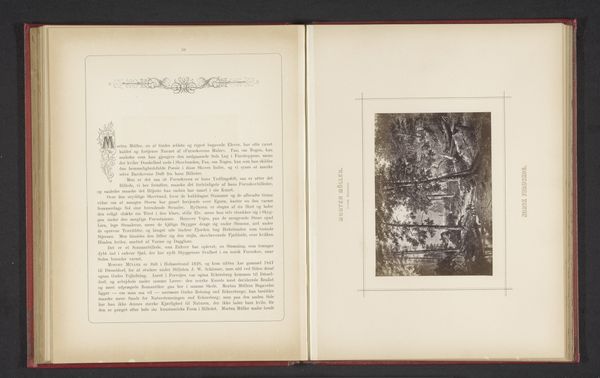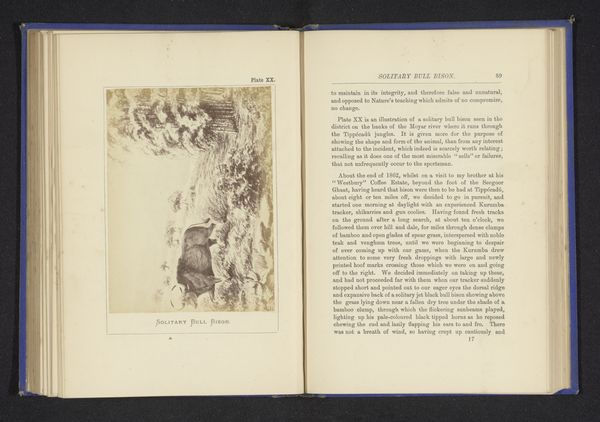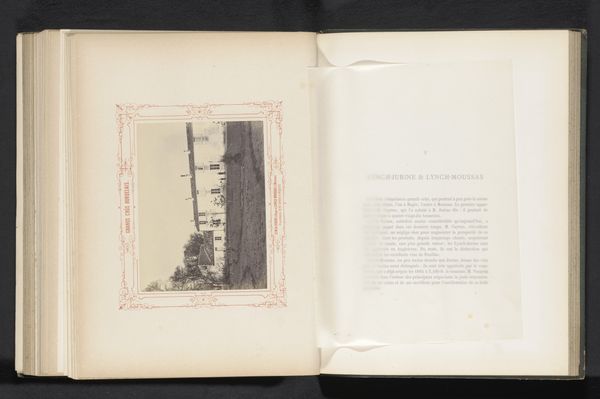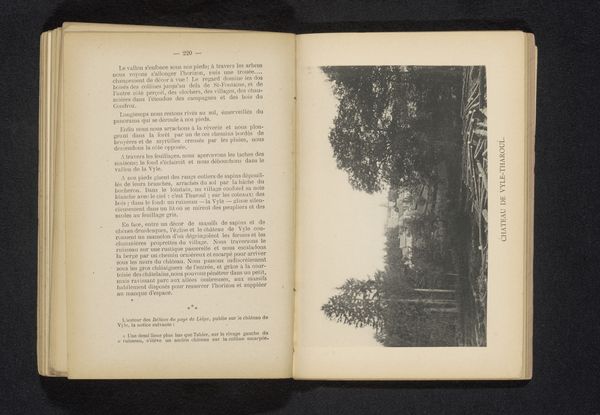
print, textile, photography, gelatin-silver-print
# print
#
book
#
landscape
#
textile
#
photography
#
gelatin-silver-print
Dimensions: height 139 mm, width 103 mm
Copyright: Rijks Museum: Open Domain
Editor: So, here we have a gelatin-silver print from before 1871, "Gezicht op twee wilgen in Moor Park in Rickmansworth" by H.V. Lemenager. It's a landscape photograph included in a book, with accompanying text on the left-hand page. The tones are quite muted and soft. I’m curious, what do you see when you look at this work? Curator: What strikes me immediately is the presentation of the landscape within the confines of the book. It transforms the trees into something documented, almost catalogued. Landscape photography at this time was deeply tied to colonial exploration and scientific documentation. Do you think framing the landscape in this way invites questions about power and ownership? Editor: That's an interesting point, the link to colonialism hadn’t occurred to me. I guess I was focusing on the aesthetic quality and overlooking its historical implications. Curator: Exactly! These serene images are often not as innocent as they seem. The choice of focusing on willow trees specifically can carry additional layers of meaning. Willows often symbolize sorrow and resilience, which makes me consider this work within the social anxieties of its time, perhaps relating to urbanization or changing land use policies. What feelings does the image evoke in you personally? Editor: There is a certain melancholy associated with the lone standing tree. Now that you’ve pointed out the tree’s symbolic value, it brings new dimensions to my interpretation, beyond simply appreciating its photographic qualities. Curator: Precisely! Context allows us to see these works not just as images, but as cultural artifacts deeply embedded in their own moment, with connections to the present. Editor: Thanks, I see so much more in it now! Curator: My pleasure!
Comments
No comments
Be the first to comment and join the conversation on the ultimate creative platform.
